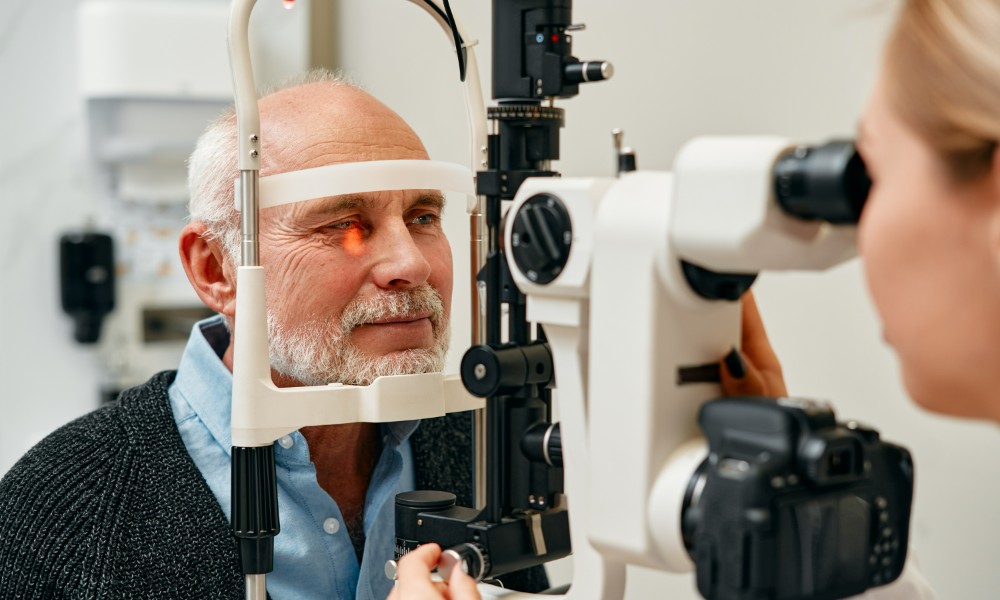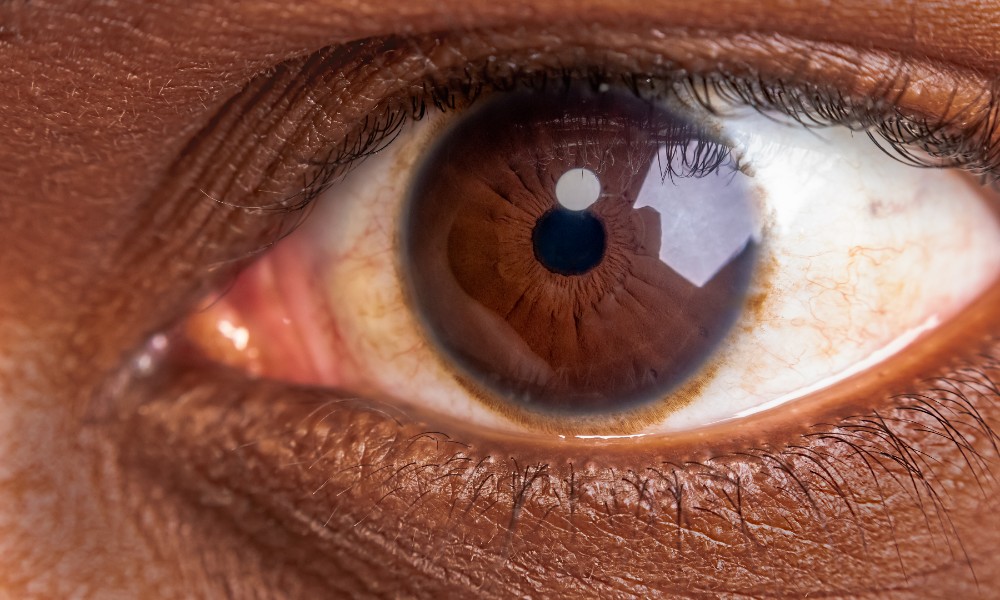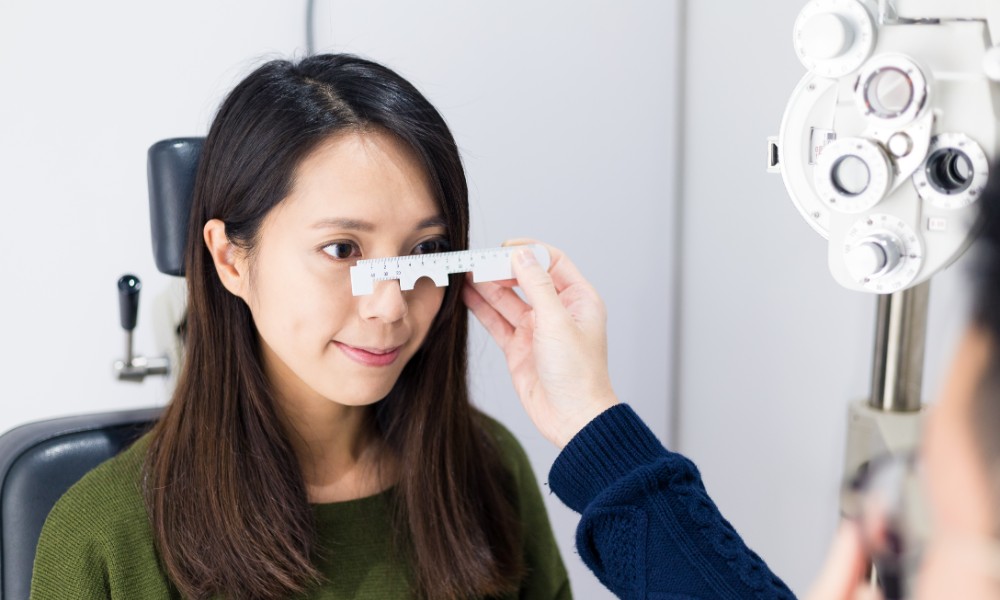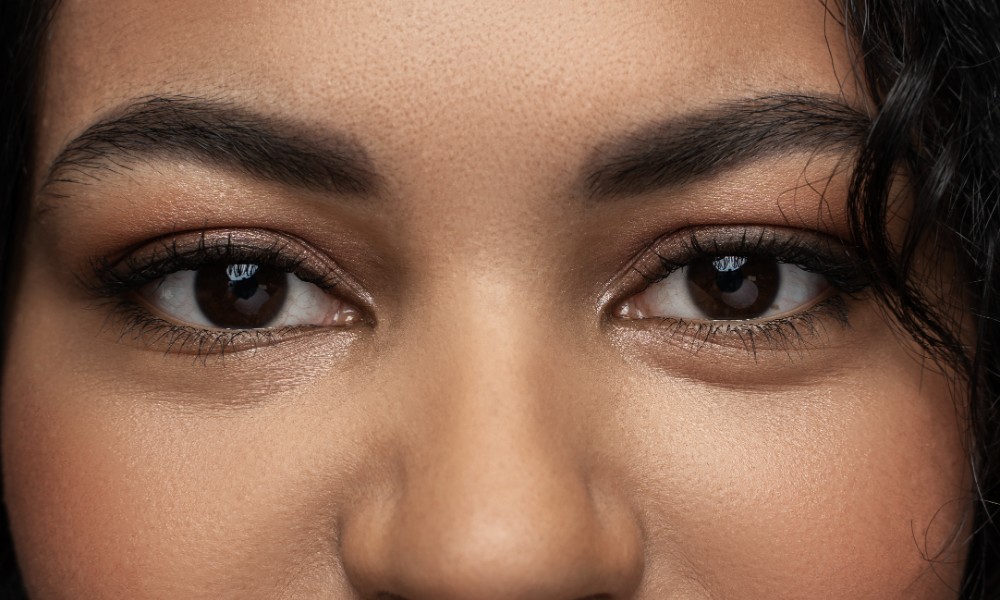Zeaxanthin is a dietary carotenoid that plays a critical role in the health of our eyes. Present predominantly in the central part of the retina known as the macula, zeaxanthin acts as a protective shield against harmful high-energy light waves like ultraviolet rays from the sun. Along with its close relative, lutein, zeaxanthin is vital for maintaining long-term eye health.
What is zeaxanthin?
Zeaxanthin is a naturally occurring carotenoid, found in a variety of fruits, vegetables, and other sources. This section will provide a more comprehensive overview of what zeaxanthin is, its chemical properties, how the body processes it, and its unique placement in the realm of nutrients vital for health.
The chemistry of zeaxanthin
Chemically, zeaxanthin is a type of xanthophyll, which itself is a class of carotenoids. Carotenoids are pigments synthesized by plants that give them their red, yellow, and orange colors. Structurally, zeaxanthin is an isomer of lutein; both share the same chemical formula but differ slightly in the arrangement of their atoms. This subtle difference influences how each is absorbed and used by the human body.
Zeaxanthin is particularly stable when exposed to light and oxygen, making it an effective antioxidant. It primarily absorbs blue light, which is part of the high-energy visible (HEV) spectrum that can be particularly damaging to the eyes. This capability makes zeaxanthin a critical component of eye health, as it helps to minimize damage caused by light exposure.

Bioavailability and absorption
The bioavailability of zeaxanthin depends on several factors including the food matrix it is consumed in, the amount of dietary fat present, and individual variations in digestion and metabolism. Generally, zeaxanthin is better absorbed when consumed with fats because carotenoids are fat-soluble. Once ingested, zeaxanthin is transported in the bloodstream by lipoproteins and delivered to various tissues, including the eyes.
Distribution and function in the body
Within the body, zeaxanthin is selectively taken up by the macula, an area in the center of the retina responsible for sharp and detailed vision. Here, zeaxanthin helps to form macular pigment, along with lutein and another xanthophyll called meso-zeaxanthin, which the body can synthesize from lutein. This pigment not only protects the retina from the harmful effects of oxidative stress but also filters out damaging blue light.
Zeaxanthin and systemic health
While zeaxanthin is predominantly recognized for its role in eye health, its function as an antioxidant suggests broader implications for overall health. Oxidative stress contributes to numerous chronic diseases, including cardiovascular disease and certain types of cancer. By neutralizing free radicals—unstable molecules that can cause cellular damage—zeaxanthin helps protect against these conditions. Furthermore, emerging research is investigating the potential cognitive benefits associated with zeaxanthin, particularly as it relates to aging and cognitive decline.
The role of zeaxanthin in eye health
Zeaxanthin is a cornerstone nutrient for maintaining optimal eye health. Its primary role involves protection and enhancement of vision through several biological mechanisms. Let’s explore how zeaxanthin contributes to different aspects of eye health.
Protecting against age-related macular degeneration (AMD)
One of the most significant benefits of zeaxanthin is its protective effect against age-related macular degeneration, a leading cause of vision loss in the elderly. AMD affects the macula, the part of the retina responsible for clear, central vision. Zeaxanthin, along with lutein, accumulates in the macula where they form the macular pigment. This pigment protects the eyes by filtering out potentially harmful blue light and shielding the retina from damage caused by photo-oxidation. Research has consistently shown that higher concentrations of macular pigment are associated with a reduced risk of developing AMD.
Reducing the risk of cataracts
Cataracts are another common eye condition characterized by clouding of the lens, which leads to diminished vision. Zeaxanthin helps to maintain the health of the lens by acting as an antioxidant and protecting against oxidative stress, which can cause the proteins in the lens to clump together and form cataracts. Epidemiological studies have suggested a correlation between higher dietary intake of zeaxanthin and a decreased risk of developing cataracts.

Enhancing visual function
Beyond its protective roles, zeaxanthin has been shown to enhance several aspects of visual function. These include improved visual acuity, enhanced contrast sensitivity, and better glare recovery. Zeaxanthin helps to improve the quality of the visual signal sent to the brain by reducing the amount of scattered light entering the eye and increasing the contrast of images. This can be particularly beneficial in low-light conditions and where color differentiation is necessary.
Supporting overall eye health
Zeaxanthin also supports the overall structural integrity of the eye. It reduces the risk of other eye diseases such as diabetic retinopathy and may help in reducing inflammation in the eye tissues. Additionally, it is thought that zeaxanthin can improve blood circulation within the retina, further supporting eye health and function.
Sources of zeaxanthin
To harness the benefits of zeaxanthin, it is important to include sources of this nutrient in our diet. Zeaxanthin is available from a variety of dietary sources as well as supplements.
Dietary sources
The best natural sources of zeaxanthin are fruits and vegetables that are yellow, orange, or green. These include:
- Leafy greens: Kale, spinach, and Swiss chard are excellent sources of zeaxanthin. These vegetables also contain lutein, making them doubly beneficial for eye health.
- Eggs: The yolk contains significant levels of zeaxanthin, and because it is fat-soluble, it is highly bioavailable in this form.
- Corn: Yellow corn is a good source of zeaxanthin, and its levels are higher in cooked corn.
- Peppers: Orange bell peppers are particularly high in zeaxanthin, along with red peppers and green bell peppers.
- Fruits: Fruits like orange, kiwi, grapes, and orange melon also contribute to dietary zeaxanthin.

Supplements and fortified foods
For those who may not get enough zeaxanthin from their diet, supplements are available. Zeaxanthin supplements often come combined with lutein, as these two carotenoids work synergistically to protect the eyes. When choosing supplements, it’s important to look for those that are derived from natural sources and are free from unnecessary additives.
Fortified foods, such as certain types of milk or juices, can also provide additional zeaxanthin, although it’s essential to check the labels for the actual content and bioavailability.
The science behind zeaxanthin
The beneficial impacts of zeaxanthin on eye health are supported by a robust body of scientific research. This section will delve into the clinical studies that have highlighted its effectiveness, the mechanisms through which zeaxanthin operates, and the ongoing investigations into how it can protect and enhance visual function.
Clinical studies and findings
Numerous clinical trials and epidemiological studies have examined the role of zeaxanthin in eye health, particularly in relation to age-related macular degeneration (AMD) and cataracts. One of the most notable studies, the Age-Related Eye Disease Study 2 (AREDS2), conducted by the National Eye Institute, highlighted the importance of dietary supplementation with zeaxanthin and lutein in reducing the risk of progression to advanced AMD. Participants who took these supplements had a 25% reduced risk of progression to advanced stages compared to those who did not.
Another significant aspect of research focuses on how zeaxanthin affects visual performance. Studies have demonstrated improvements in visual acuity, contrast sensitivity, and the ability to discern fine details, especially in challenging visual conditions such as low light or high glare environments.
Mechanisms of action
The protective and enhancing effects of zeaxanthin on vision can be attributed to several key mechanisms:
- Blue light filtration: Zeaxanthin acts as a natural filter for high-energy blue light, which can damage the light-sensitive cells in the retina. By absorbing blue light, zeaxanthin helps to protect the retina from light-induced oxidative stress.
- Antioxidant properties: Zeaxanthin is a powerful antioxidant that neutralizes free radicals in the eye. This is crucial in preventing the oxidative damage that can lead to AMD and other degenerative eye diseases.
- Enhancement of visual processing: By increasing the density of the macular pigment, zeaxanthin improves the visual signal that reaches the brain, thereby enhancing visual processing and reducing glare disability.
Zeaxanthin in different populations and health conditions
Given the wide-ranging benefits of zeaxanthin, understanding its effects across different populations and health conditions is crucial. This section explores how various demographics might uniquely benefit from zeaxanthin, including the elderly, diabetics, and those at genetic risk for eye diseases.

Age-related considerations
The elderly population is particularly susceptible to conditions like AMD and cataracts, which can significantly impair vision and quality of life. Dietary supplementation with zeaxanthin has been shown to be beneficial in slowing the progression of these diseases and in some cases, improving visual function. Ensuring adequate intake of zeaxanthin could be especially critical for older adults to maintain their independence and continue performing tasks that require sharp vision, such as driving and reading.
Impact on diabetic eye health
Diabetic retinopathy is a major concern for individuals with diabetes, as it can lead to significant visual impairment. Zeaxanthin’s antioxidant properties may help protect against oxidative stress and inflammation associated with high glucose levels in diabetics, potentially slowing the progression of diabetic retinopathy. Research in this area could lead to dietary recommendations specifically tailored for diabetics to help manage or prevent eye complications.
Genetic factors and responsiveness to zeaxanthin
Genetic factors play a significant role in how individuals metabolize carotenoids like zeaxanthin. Variations in genes related to fat metabolism and carotenoid conversion can affect the absorption and efficacy of zeaxanthin. Studying these genetic markers could help in developing personalized dietary plans that optimize zeaxanthin intake based on individual genetic profiles.
Dietary strategies for optimizing zeaxanthin intake
To maximize the benefits of zeaxanthin, it is important to consider dietary strategies that can enhance its absorption and effectiveness. This section provides practical advice on how to incorporate zeaxanthin into the diet effectively.
Enhancing absorption through dietary fats
Since zeaxanthin is fat-soluble, its absorption is significantly increased when consumed with dietary fats. Adding a small amount of healthy fat, such as olive oil or avocado, to a meal that includes zeaxanthin-rich foods can help maximize absorption. For instance, a spinach salad drizzled with olive oil not only tastes great but also increases the bioavailability of zeaxanthin.
Synergistic effects with other nutrients
Zeaxanthin works synergistically with other antioxidants, such as vitamin C, vitamin E, and beta-carotene. Consuming a diet rich in a variety of antioxidants can help enhance the protective effects of zeaxanthin. Foods such as berries, nuts, and seeds are excellent sources of these antioxidants and can complement the intake of zeaxanthin-rich foods.
Regular consumption and dietary patterns
Maintaining a regular intake of zeaxanthin through a balanced diet is key to deriving its long-term benefits. Mediterranean and vegetarian diets, which are high in fruits and vegetables, naturally provide high levels of zeaxanthin and other beneficial nutrients. Adopting such dietary patterns can be an effective strategy for maintaining eye health and overall wellness.

Public health implications and awareness
Raising public awareness about the importance of zeaxanthin for eye health is crucial in preventive health care. This section discusses strategies for public health initiatives and educational efforts.
Educational campaigns
Public health organizations can play a pivotal role in educating the public about the benefits of zeaxanthin. Campaigns that focus on the importance of diet in preventing eye diseases could encourage more people to consume zeaxanthin-rich foods. These campaigns can include informational pamphlets, workshops, and collaborations with healthcare providers.
Incorporation into dietary guidelines
Incorporating specific recommendations for zeaxanthin intake into national dietary guidelines could help improve public health outcomes related to eye health. Guidelines can offer specific advice on how to incorporate sufficient zeaxanthin into the diet through simple and accessible dietary choices.
Future research and potential
While the benefits of zeaxanthin on eye health are well documented, future research aims to explore its potential in other areas of health and to better understand how it can be utilized more effectively.
Expanding benefits beyond eye health
Emerging research suggests that the antioxidant properties of zeaxanthin may have broader implications for health beyond the eyes. Studies are investigating its potential impacts on skin health, where it may protect against UV damage, and on cognitive function, particularly in the aging population. Researchers are also exploring whether zeaxanthin could play a role in preventing or mitigating conditions like Alzheimer’s disease, given its antioxidant capabilities and its role in neural functioning.
Challenges in zeaxanthin research
Determining the optimal levels of zeaxanthin required for various health benefits remains a challenge. Dosage studies are crucial for establishing guidelines that can maximize the therapeutic benefits of zeaxanthin supplementation. Moreover, understanding the interactions between zeaxanthin and other dietary nutrients and how these influence its efficacy and bioavailability is critical for developing effective dietary recommendations and supplement formulations.

Opportunities in therapeutic applications
As the population ages, the incidence of AMD and other age-related eye conditions is expected to rise, increasing the demand for effective preventive measures and treatments. Zeaxanthin, with its natural protective qualities, presents a significant opportunity for development into therapeutic applications. Future research will likely focus on how it can be integrated into broader preventive strategies or combined with other treatments to enhance eye health and potentially other aspects of overall well-being.




